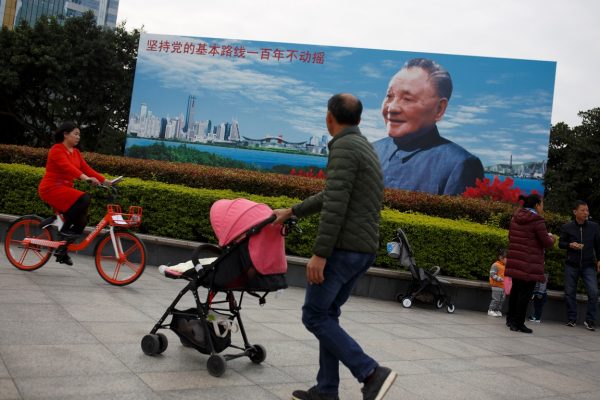On the brink of another period of economic transition, the pragmatic approach to development that has been the hallmark of Chinese policymaking over the past four decades remains as valuable as ever.
The 1978 plenum launched the country on an unprecedented journey of ‘reform and opening-up’ and ‘socialist modernisation’. The prevailing ‘two whatevers’ orthodoxy — whatever Mao Zedong decided would remain valid, whatever directives Mao gave should be followed — was skilfully circumvented by Deng Xiaoping. Deng argued that while one should always ‘seek truth from facts’, as per Mao Zedong Thought, ‘practice is the sole criterion for testing truth’. Pragmatism, not ideological blinkers, became the order of the day and reality, not received dogma, the ideological basis to test policy correctness.
Having turned Mao’s ‘truth from facts’ dictum on its head, Deng reformulated the Party’s ‘general task’ away from ‘waging class struggle’ and set about unleashing the Four Modernisations — that of agriculture, industry, science and technology, and national defence.
The success of China’s third plenum-inspired reforms has been ascribed to a variety of factors. Under Deng’s directive, China institutionalised power competition and orderly succession within a broader framework of oligarchic collective leadership. The process allowed the Party to move beyond the acute personality and ideology-based clashes that had convulsed the body politic during the later Mao years.
Reforms in agriculture aligned individual incentives with the production structure and unleashed a burst of creativity in the countryside that later spilt into towns and cities. The third plenum communique ruled that ‘small plots of land for private use by commune members, their domestic side-occupations … are necessary adjuncts of the socialist economy, and must not be interfered with’. The ‘big bang’ approach to reform was eschewed and pro-reform constituencies were fostered that could overcome inefficiencies associated with imperfect markets and price distortions.
The opening of China’s eastern seaboard to foreign trade and investment enabled China to profit from its comparative advantage in labour-intensive industries. As the supply chains of foreign-invested and export-oriented enterprises took root on Chinese soil, an ever-increasing share of parts and components began to be sourced domestically. China now retains a hold over the development of these supply chains in medium-technology intensive industries within global manufacturing. An enabling external environment featuring a symbiotic relationship with the United States should not be discounted either.
But above all, two factors were key. First, because the reform process was part of a political calculus to strengthen the Party’s legitimacy, the consensus for reform was broad, deep and durable. Second, the reforms that emphasised political and fiscal decentralisation struck the right balance between top-down control and local initiative and were embedded in historical patterns of growth and development. Imperial China was also a regionally segmented economy held together by the centre’s iron control over personnel transfers and promotions. This prevented patron-client politics from capturing the system and motivated ambitious local officials to innovate both for themselves and for the country.
Looking ahead, the nation and the Party stand on the cusp of a transition just as consequential and challenging as that of four decades ago.
Economically, the East Asian growth model has not been conducive to countries aspiring to shift from manufacturing and investment-led growth to services and consumption-led growth. Each high-growth, manufacturing-intensive economy that has attempted it, notably Japan and South Korea, suffered a sharp slowdown.
Politically, middle income status and the growing sophistication of a propertied middle class have not been conducive to domestic stability in authoritarian, late-developing societies. No East Asian society (barring the small city-states) that has traversed the perilous thoroughfare from US$10,000 to US$20,000 per capita income has come away with its political system unscathed. South Korea and Taiwan witnessed dramatic pro-democracy movements.
Externally, meanwhile, the US–China relationship stands at a profound inflection point.
That said, there is nothing foreordained about China’s — and the Party’s — future. China is liberalising its inward investment and services regimes at a far earlier level of development than Japan or South Korea ever attempted. The collective decision-making structure of the upper echelons of the Party also differs from the charismatic, one-person military dictatorships that ruled in Seoul and Taipei during their transitions.
The Trump administration’s unprecedented geo-economic actions against Beijing could well produce a reform of China’s foreign investment and joint venture regime that is as thoroughgoing as the late-1990s reform of its trading regime. This would bind the two countries in a symbiotic trade and investment relationship for the next three decades.
Whatever China’s fortunes might turn out to be, one thing is certain: so long as it continues to make ‘practice the sole criterion for testing truth’, its astonishing economic re-opening will propel the nation forward in the 21st century. As President Xi Jinping seemed to suggest in his speech commemorating the 40th anniversary of reform and opening-up, reality as the test of policy correctness will likely continue to govern the day.
Sourabh Gupta is Senior Fellow at the Institute for China–America Studies in Washington DC.

